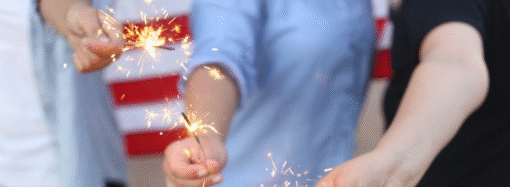By now you may have heard of 9-year-old Hilde Kate Lysiak, the little girl who owns and operates a small local newspaper known as The Orange Street News. Hilde was catapulted to fame the other week when her publication ran exclusive information she had sniffed out about a local murder.
Following the release of the story in The Orange Street News, Hilde – and by extent her family – came under criticism for letting a 9-year-old cover such a gory subject like a murder. But according to The New York Times, Hilde’s parents are the ones who encouraged her passion for journalism:
“Hilde and her sister Isabel, 12, are home-schooled; their other sisters are 18 months and 4. Mr. Lysiak and Ms. Reddan said they gave their daughters the freedom to pursue their passions under the theory that when they are engaged, they learn.”
Such a theory of education is similar to the one which Booker T. Washington stumbled upon in his years as a teacher. In his book, My Larger Education, Washington relays how as a teacher, he discovered the best way to instill lessons in children was to give them first-hand experience instead of simply sticking to learning from textbooks:
“The hour previous to recess had been employed by me in trying to get a class of children interested in what proved to be a rather stupid geography lesson. I had been asking my pupils a lot of dull and tiresome questions, getting them to define and name lakes, capes, peninsulas, islands, and so forth. Naturally the answers of the children were quite as dull and stupid as the questions.
…
We had not been out of the school house and away from the old geography lesson long before one of the boys who had been among the dullest in his recitation in the school room became the leader of a sort of exploring party. Under his leadership we began to discover, as we waded along the stream, dozens of islands, capes, and peninsulas, with here and there a little lake or bay, which, as some of the pupils pointed out, would furnish a safe harbor for ships if the stream were only large enough. Soon every one of the children was busy pointing out and naming the natural divisions of land and water. And then, after a few days, we got pieces of wood and bark and let them float down the stream; we imagined them to be great ships carrying their cargoes of merchandise from one part of the world to another. We studied the way the stream wandered about in the level land, and noticed how the little sand bars and the corresponding harbors were formed by the particles of sand and earth which were rolled down by the stream. We located cities on these harbors, and tried to find water power where we might build up manufacturing centers.”
Today’s education system is continually trying to raise scores and devise ways to give students a boost in the academic world. But have they overlooked one of the most effective ways to do this? Would today’s students have better retention and a greater desire to learn if more parents and teachers gave children hands-on experience and demonstrated how the things learned in textbooks can be used and applied in real life?
Image Credit: Doug Brown bit.ly/1iowB8m
















Leave a Comment
Your email address will not be published. Required fields are marked with *